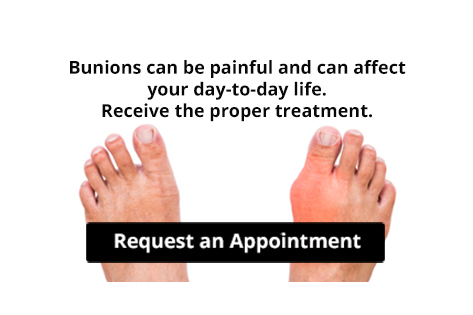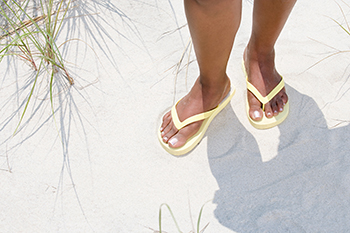April 2021
What Causes Sesamoiditis?
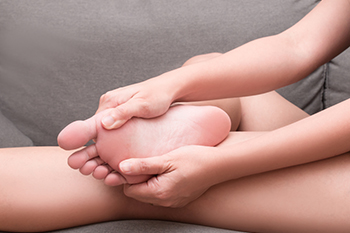 Sesamoiditis is a foot condition in which the sesamoid bones, which are located beneath the big toe joint, are injured, leading to symptoms such as foot pain, stiffness, redness, swelling, and difficulty walking. This injury is usually caused by increased pressure on the ball of the foot from sporting activities like running, basketball, football, golf, tennis, and ballet. People who have feet with high or low arches and those with prominent big toe joints may be at an increased risk of developing sesamoiditis. Another potential cause for this condition is wearing high heeled shoes, which put the balls of the feet under increased stress. If you are experiencing the symptoms of sesamoiditis, please seek the care of a podiatrist.
Sesamoiditis is a foot condition in which the sesamoid bones, which are located beneath the big toe joint, are injured, leading to symptoms such as foot pain, stiffness, redness, swelling, and difficulty walking. This injury is usually caused by increased pressure on the ball of the foot from sporting activities like running, basketball, football, golf, tennis, and ballet. People who have feet with high or low arches and those with prominent big toe joints may be at an increased risk of developing sesamoiditis. Another potential cause for this condition is wearing high heeled shoes, which put the balls of the feet under increased stress. If you are experiencing the symptoms of sesamoiditis, please seek the care of a podiatrist.
Sesamoiditis is an unpleasant foot condition characterized by pain in the balls of the feet. If you think you’re struggling with sesamoiditis, contact Dr. Lee R. Stein of Lake Shore Foot & Ankle, PC. Our doctor will treat your condition thoroughly and effectively.
Sesamoiditis
Sesamoiditis is a condition of the foot that affects the ball of the foot. It is more common in younger people than it is in older people. It can also occur with people who have begun a new exercise program, since their bodies are adjusting to the new physical regimen. Pain may also be caused by the inflammation of tendons surrounding the bones. It is important to seek treatment in its early stages because if you ignore the pain, this condition can lead to more serious problems such as severe irritation and bone fractures.
Causes of Sesamoiditis
- Sudden increase in activity
- Increase in physically strenuous movement without a proper warm up or build up
- Foot structure: those who have smaller, bonier feet or those with a high arch may be more susceptible
Treatment for sesamoiditis is non-invasive and simple. Doctors may recommend a strict rest period where the patient forgoes most physical activity. This will help give the patient time to heal their feet through limited activity. For serious cases, it is best to speak with your doctor to determine a treatment option that will help your specific needs.
If you have any questions please feel free to contact one of our offices located in Chicago, Highland Park, and Uptown, IL . We offer the newest diagnostic and treatment technologies for all your foot and ankle needs.
Blisters and Gait
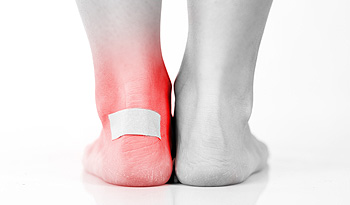 Blisters are fluid-filled bubbles of skin that can form on the bottom of the feet due to the friction of your shoes rubbing against an area of skin as you walk or run. Blisters can be uncomfortable or painful, hindering your ability to walk, run, or stand for prolonged periods of time. While blisters are sometimes the result of wearing the wrong shoes, they can also be caused by having an abnormal gait or walking pattern. This may be the case for you if you notice blisters forming on your feet frequently, regardless of what kinds of shoes you are wearing. A podiatrist can analyze your gait and determine what may be causing your blisters. The doctor may prescribe custom orthotics or certain exercises to help correct your gait. For more information about the relationship between your gait and foot and ankle injuries, please consult with a podiatrist.
Blisters are fluid-filled bubbles of skin that can form on the bottom of the feet due to the friction of your shoes rubbing against an area of skin as you walk or run. Blisters can be uncomfortable or painful, hindering your ability to walk, run, or stand for prolonged periods of time. While blisters are sometimes the result of wearing the wrong shoes, they can also be caused by having an abnormal gait or walking pattern. This may be the case for you if you notice blisters forming on your feet frequently, regardless of what kinds of shoes you are wearing. A podiatrist can analyze your gait and determine what may be causing your blisters. The doctor may prescribe custom orthotics or certain exercises to help correct your gait. For more information about the relationship between your gait and foot and ankle injuries, please consult with a podiatrist.
Blisters are prone to making everyday activities extremely uncomfortable. If your feet are hurting, contact Dr. Lee R. Stein of Lake Shore Foot & Ankle, PC. Our doctor can provide the care you need to keep you pain-free and on your feet.
Foot Blisters
Foot blisters develop as a result of constantly wearing tight or ill-fitting footwear. This happens due to the constant rubbing from the shoe, which can often lead to pain.
What Are Foot Blisters?
A foot blister is a small fluid-filled pocket that forms on the upper-most layer of the skin. Blisters are filled with clear fluid and can lead to blood drainage or pus if the area becomes infected.
How Do Blisters Form?
Blisters on the feet are often the result of constant friction of skin and material, usually by shoe rubbing. Walking in sandals, boots, or shoes that don’t fit properly for long periods of time can result in a blister. Having consistent foot moisture and humidity can easily lead to blister formation.
Prevention & Treatment
It is important to properly care for the affected area in order to prevent infection and ease the pain. Do not lance the blister and use a Band-Aid to provide pain relief. Also, be sure to keep your feet dry and wear proper fitting shoes. If you see blood or pus in a blister, seek assistance from a podiatrist.
If you have any questions, please feel free to contact one of our offices located in Chicago, Highland Park, and Uptown, IL . We offer the newest diagnostic and treatment technologies for all your foot care needs.
Are Bunions Affecting Your Everyday Life?
Tarsal Tunnel Syndrome and Nerve Damage
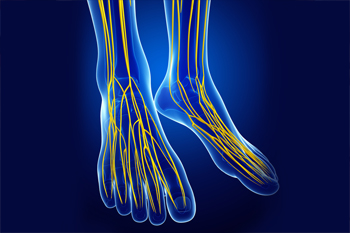 Patients who have consistent foot pain are aware of the discomfort it may cause in daily life. The foot condition that is referred to as tarsal tunnel syndrome can cause severe pain and discomfort, and is caused by nerve damage. The tarsal tunnel is found inside the ankle, and the nerve that lies in this area may become damaged from repetitive motions, bone spurs, or flat feet. When specific stretches are frequently performed, mild relief may be found. If you have ankle pain, it is suggested that you schedule a consultation with a podiatrist who can properly diagnose and treat tarsal tunnel syndrome.
Patients who have consistent foot pain are aware of the discomfort it may cause in daily life. The foot condition that is referred to as tarsal tunnel syndrome can cause severe pain and discomfort, and is caused by nerve damage. The tarsal tunnel is found inside the ankle, and the nerve that lies in this area may become damaged from repetitive motions, bone spurs, or flat feet. When specific stretches are frequently performed, mild relief may be found. If you have ankle pain, it is suggested that you schedule a consultation with a podiatrist who can properly diagnose and treat tarsal tunnel syndrome.
Tarsal tunnel syndrome can be very uncomfortable to live with. If you are experiencing tarsal tunnel syndrome, contact Dr. Lee R. Stein of Lake Shore Foot & Ankle, PC. Our doctor can provide the care you need to keep you pain-free and on your feet.
Tarsal Tunnel Syndrome
Tarsal tunnel syndrome, which can also be called tibial nerve dysfunction, is an uncommon condition of misfiring peripheral nerves in the foot. The tibial nerve is the peripheral nerve in the leg responsible for sensation and movement of the foot and calf muscles. In tarsal tunnel syndrome, the tibial nerve is damaged, causing problems with movement and feeling in the foot of the affected leg.
Common Cause of Tarsal Tunnel Syndrome
- Involves pressure or an injury, direct pressure on the tibial nerve for an extended period of time, sometimes caused by other body structures close by or near the knee.
- Diseases that damage nerves, including diabetes, may cause tarsal tunnel syndrome.
- At times, tarsal tunnel syndrome can appear without an obvious cause in some cases.
The Effects of Tarsal Tunnel Syndrome
- Different sensations, an afflicted person may experience pain, tingling, burning or other unusual sensations in the foot of the affected leg.
- The foot muscles, toes and ankle become weaker, and curling your toes or flexing your foot can become difficult.
- If condition worsens, infections and ulcers may develop on the foot that is experiencing the syndrome.
A physical exam of the leg can help identify the presence of tarsal tunnel syndrome. Medical tests, such as a nerve biopsy, are also used to diagnose the condition. Patients may receive physical therapy and prescriptive medication. In extreme cases, some may require surgery.
If you have any questions please feel free to contact one of our offices located in Chicago, Highland Park, and Uptown, IL . We offer the newest diagnostic and treatment technologies for all your foot and ankle needs.
Why Flip-Flops Can Be Hazardous to Your Feet
Flip-flops don’t offer the protection or support your feet need. While they may be appropriate for some limited use, they should not be worn for long periods of time. Their flimsy foam soles and lack of structure offer no arch support at all, which causes your feet to flatten and forces tendons and ligaments to compensate. This stress throughout your feet can cause heel spurs, bunions, flat feet, cracked heels and even plantar fasciitis. Additionally, their floppy “fit” makes your toes work harder to keep them on, which can cause hammertoes and put you at higher risk of twisted ankles, stubbed toes, and even trips and falls. If you would like more information about the danger of improper footwear or if you have any discomfort or pain in your feet, contact a podiatrist today.
Flip-flops are not always the best choice of footwear. If you have any concerns about your feet or ankles, contact Dr. Lee R. Stein from Lake Shore Foot & Ankle, PC. Our doctor will assist you with all of your foot and ankle needs.
Flip-Flops and Feet
When the weather starts warming up, people enjoy wearing flip-flops. Flip-flops are comfortable, stylish, and easy to slip on and off; they're perfect for any summer beach goer. However, these shoes can cause harm to the feet.
How Can Flip-Flops Affect Me Long-Term?
- Ankle problems
- Hip problems
- Lower back problems
- Pain in the balls of the feet
- Problems with foot arches
- Changes in the way you walk
Are There Injuries Associated with Flip-Flops?
Yes. Since flip-flops are relatively weak and do not provide the same amount of support as sneakers, people who wear flip-flops regularly are more susceptible to injuries. On top of that, the open nature of the shoe makes your feet more prone to other problems, such as cuts and even infections. Common injuries and ailments include:
- Sprained ankles
- Blisters
- Infections
- Cuts and Scrapes
I like Wearing Flip-Flops. Are There Safe Alternatives?
When buying flip-flops, try to find ones that have sturdy soles and that are made of high-quality materials that will support for your feet. These flip-flops will cost more but will also last longer as a result.
If you have any questions please feel free to contact one of our offices located in Chicago, Highland Park, and Uptown, IL . We offer the newest diagnostic and treatment technologies for all your foot and ankle needs.
Blog Archives
- April 2025
- March 2025
- February 2025
- January 2025
- December 2024
- November 2024
- October 2024
- September 2024
- August 2024
- July 2024
- June 2024
- May 2024
- April 2024
- March 2024
- February 2024
- January 2024
- December 2023
- November 2023
- October 2023
- September 2023
- August 2023
- July 2023
- June 2023
- May 2023
- April 2023
- March 2023
- February 2023
- January 2023
- December 2022
- November 2022
- October 2022
- September 2022
- August 2022
- July 2022
- June 2022
- May 2022
- April 2022
- March 2022
- February 2022
- January 2022
- December 2021
- November 2021
- October 2021
- September 2021
- August 2021
- July 2021
- June 2021
- May 2021
- April 2021
- March 2021
- February 2021
- January 2021
- December 2020
- November 2020
- October 2020
- September 2020
- August 2020
- July 2020
- June 2020
- May 2020
- April 2020
- March 2020
- February 2020
- January 2020
- December 2019
- November 2019
- October 2019
- September 2019
- August 2019
- July 2019
- June 2019
- May 2019
- April 2019
- March 2019
- February 2019
- January 2019
- December 2018
- November 2018
- October 2018
- September 2018
- August 2018
- July 2018



